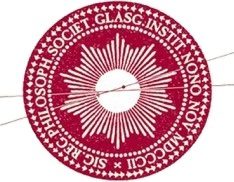Overview
Clydebank is located to the west of Glasgow and is situated on the north of the River Clyde. The Visit Scotland website offers a brief history of the area:
‘Clydebank is the historic heartland of the Scottish shipbuilding industry […]
During the 19th century, Clydebank grew from a small village to one of the world’s major ship building centres. The town was originally known as Barns o’ Clyde, but changed its name in 1882 after the Thomson brothers relocated their shipyard to the village and began building tenement housing for the workers.’
There is very little currently known about this Burns club. Outwith the names and addresses of its president and secretary, there is no information on the size of its membership nor any details regarding its meeting time and place in the Annual Burns Chronicle and Club Directory listing.
Date of Existence
1897?-1910; 1914-? Federated 1897
Source of Information
‘Directory of Burns Clubs and Scottish Societies on the Roll of the Burns Federation, 1900’, in BC, ed. by D. M’Naught, No. IX (Kilmarnock: Burns Federation, January 1900), p. 146
Repository
Mitchell Library Special Collections (MLSC)
National Library of Scotland (NLS)
Reference Number
BNS19BUR (MLSC) (Annual Burns Chronicle)
General Reading Room (stored offsite), Y.233, available no. 1-34 25th Jan. 1892-Jan. 1925 (NLS) (Annual Burns Chronicle)
Additional Notes
This club is not the same as the Barns O’ Clyde Burns Club, Clydebank.
Where there are breaks in the dates of a club’s existence, it was the case that the directories listed them as ‘dormant’ during the intervening years.
‘BC‘ refers to the Annual Burns Chronicle and Club Directory, which was published yearly since 1892. Hard copies are available at the Mitchell Library Special Collections and the National Library of Scotland. Many of them have been digitised and are available through the Robert Burns World Federation website: http://www.rbwf.org.uk/digitised-chronicles/
This list of Burns chronicles as sources of information gives the first year the club was included in the chronicle, and thereafter only for the years where the information is different from the previous year’s listing. In keeping with the scope of this study (1800-1914), only the chronicles published between 1892 and 1914 are included.
